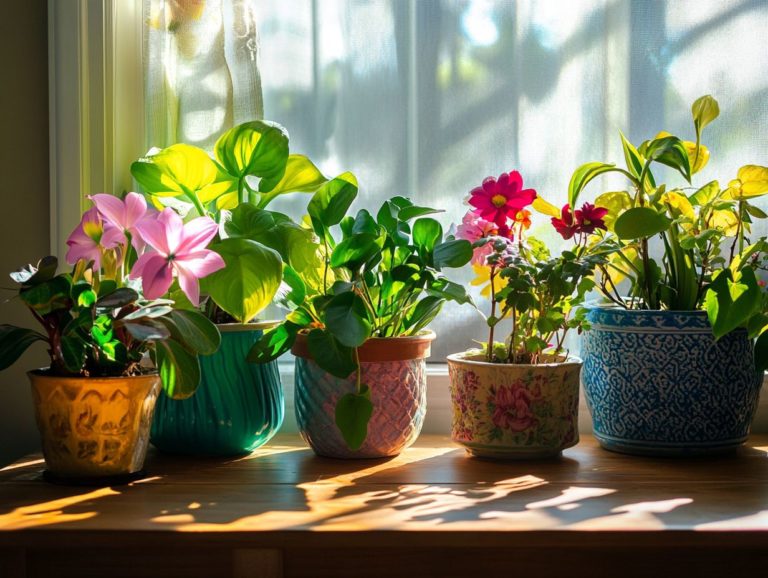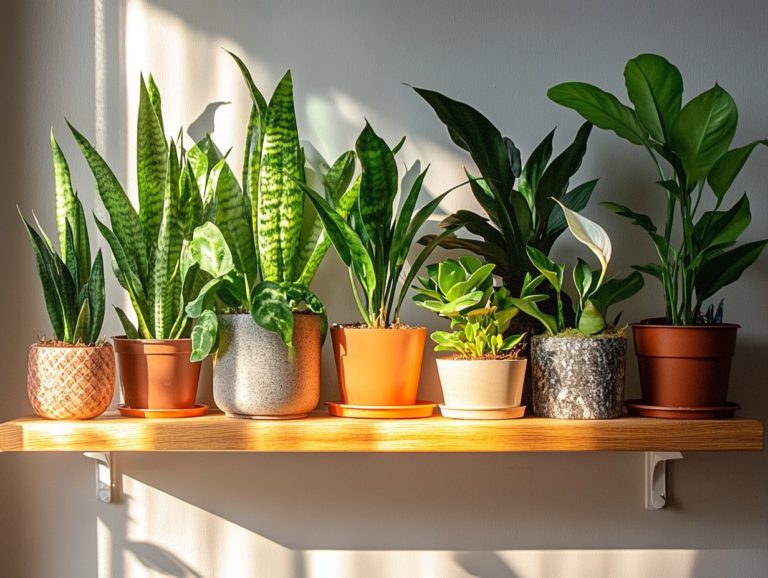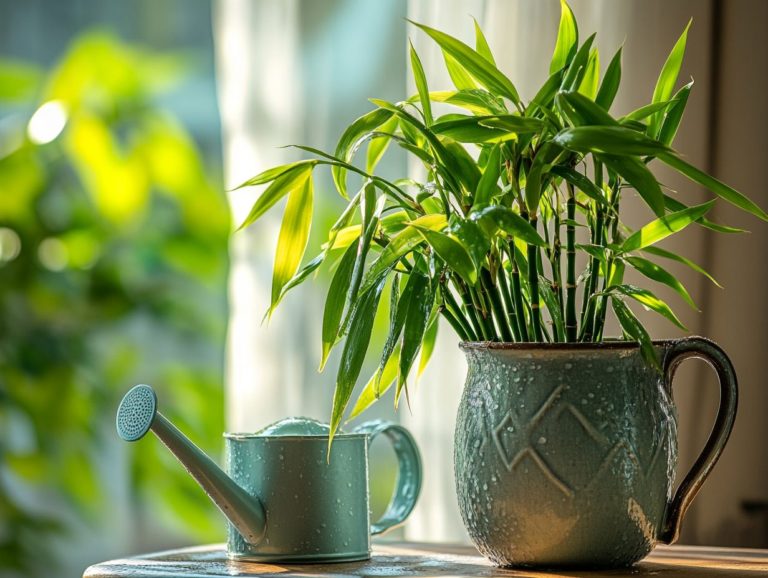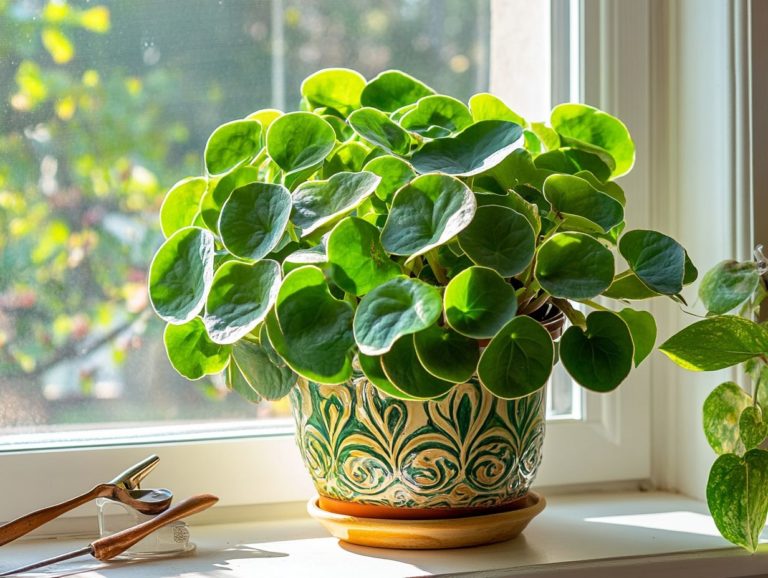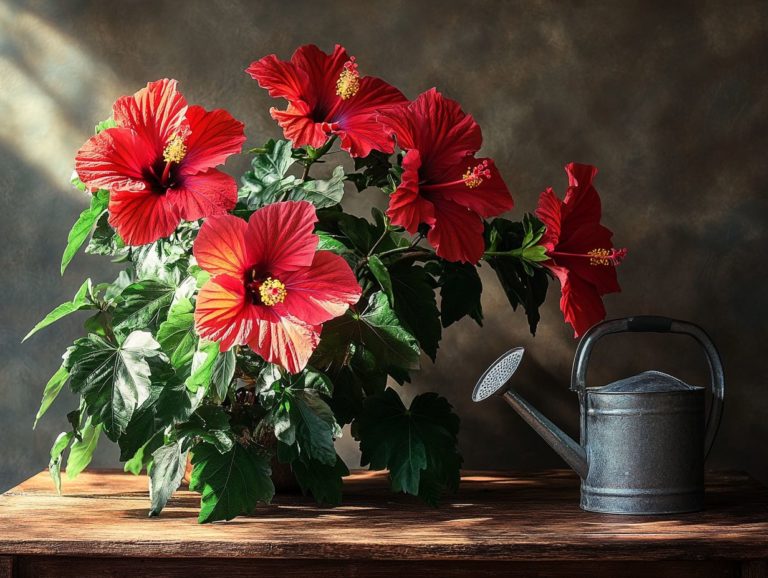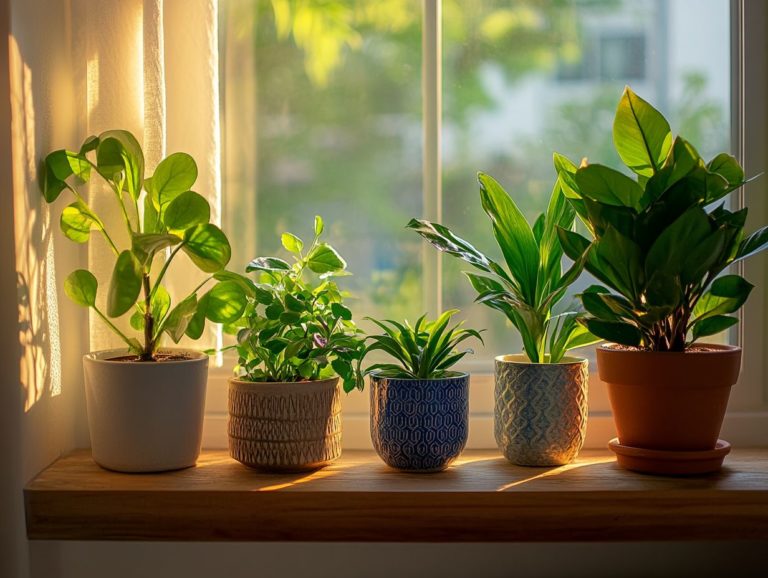Caring for Indoor Sweetheart Plants
Indoor sweetheart plants are the perfect enhancement for your home, adding a delightful touch of greenery and charm.
Known for their heart-shaped leaves and minimal upkeep, these plants are a splendid choice for both new plant lovers and seasoned horticulturists.
Get ready to unlock the secrets of keeping your sweetheart plants thriving! This guide offers essential care tips, outlining the ideal light and temperature conditions, effective watering practices, and fertilizing techniques to keep your plants flourishing.
It also covers common challenges, such as pests and diseases, while providing creative ideas for displaying your sweetheart plants. This ensures they not only thrive but also beautifully elevate your living space.
Contents
- Key Takeaways:
- What are Indoor Sweetheart Plants?
- Caring for Indoor Sweetheart Plants
- Common Issues and Solutions
- Decorating with Indoor Sweetheart Plants
- Frequently Asked Questions
- What is the best way to care for indoor sweetheart plants?
- How often should I water my indoor Sweetheart Plants?
- Can I use tap water for my indoor Sweetheart Plants?
- Do indoor Sweetheart Plants need fertilizer?
- Do I need to prune my indoor Sweetheart Plants?
- What should I do if my indoor Sweetheart Plant’s leaves turn yellow?
Key Takeaways:
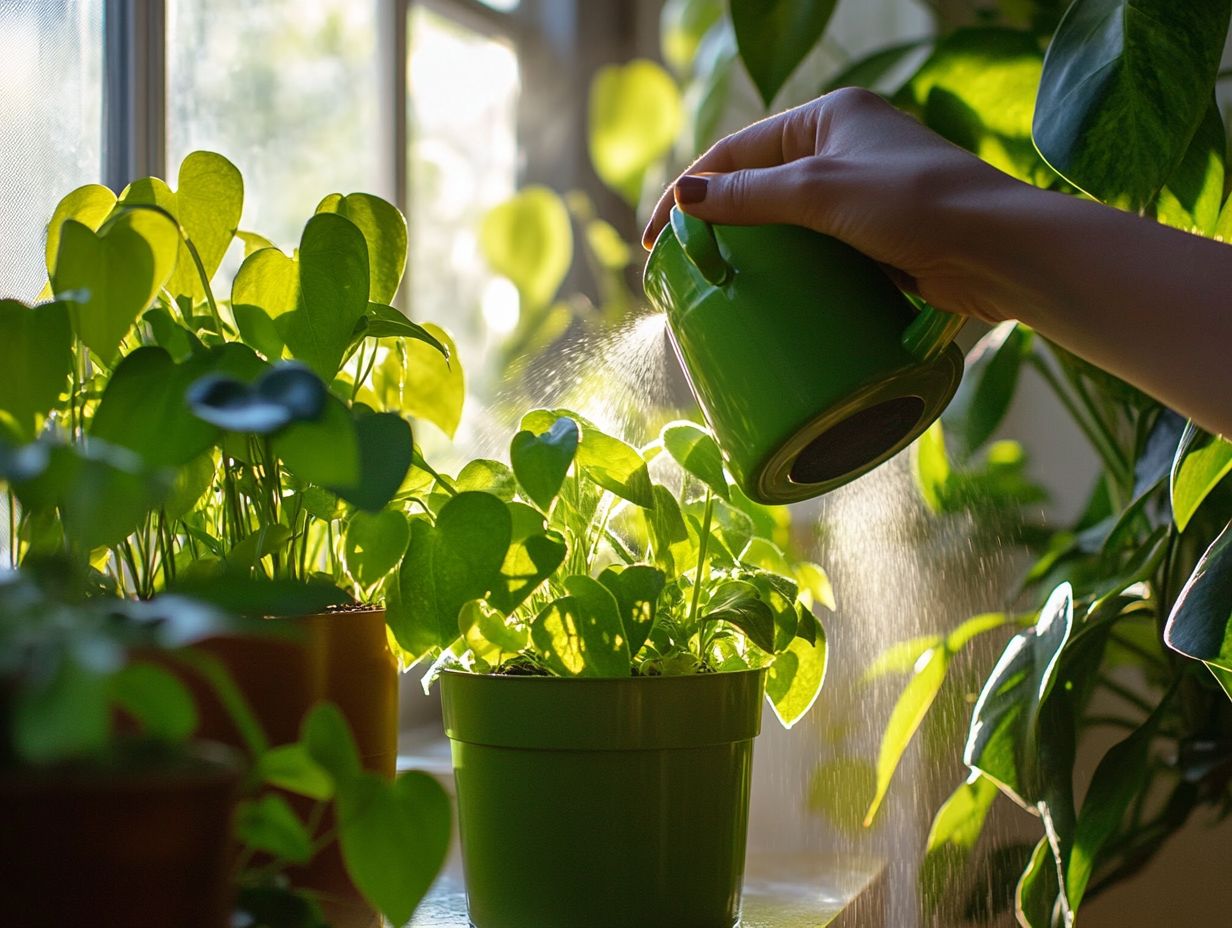
- Provide the right light and temperature for healthy growth. Avoid direct sunlight and keep the temperature between 65-75 F.
- Water and fertilize regularly, but don t overdo it. Prune to encourage growth and repot when necessary.
- Keep an eye out for pests and diseases. Get creative in displaying your plants to add variety to your home decor.
What are Indoor Sweetheart Plants?
Indoor Sweetheart Plants, or Hoya kerrii, are beloved for their charming heart-shaped leaves. They enhance any indoor space beautifully.
These plants come from Southeast Asia, especially Thailand. They offer low-maintenance care, making them ideal for both plant lovers and home decorators.
Caring for Indoor Sweetheart Plants
Caring for Sweetheart Plants means understanding their needs. Focus on light, temperature, humidity, and well-draining soil.
By providing these essentials, you ll see lush leaves and, if you’re lucky, beautiful blooms!
Light and Temperature Requirements
Hoya kerrii loves bright, indirect sunlight. It does best in temperatures between 60-80 F (15-27 C).
Keep it near east or north-facing windows. Avoid cold drafts or heat from appliances to prevent stress.
In terms of humidity, Hoya kerrii enjoys levels between 50-70%. You can use a humidifier, mist the leaves, or place the pot on a tray filled with water and pebbles to maintain moisture.
Watering and Fertilizing
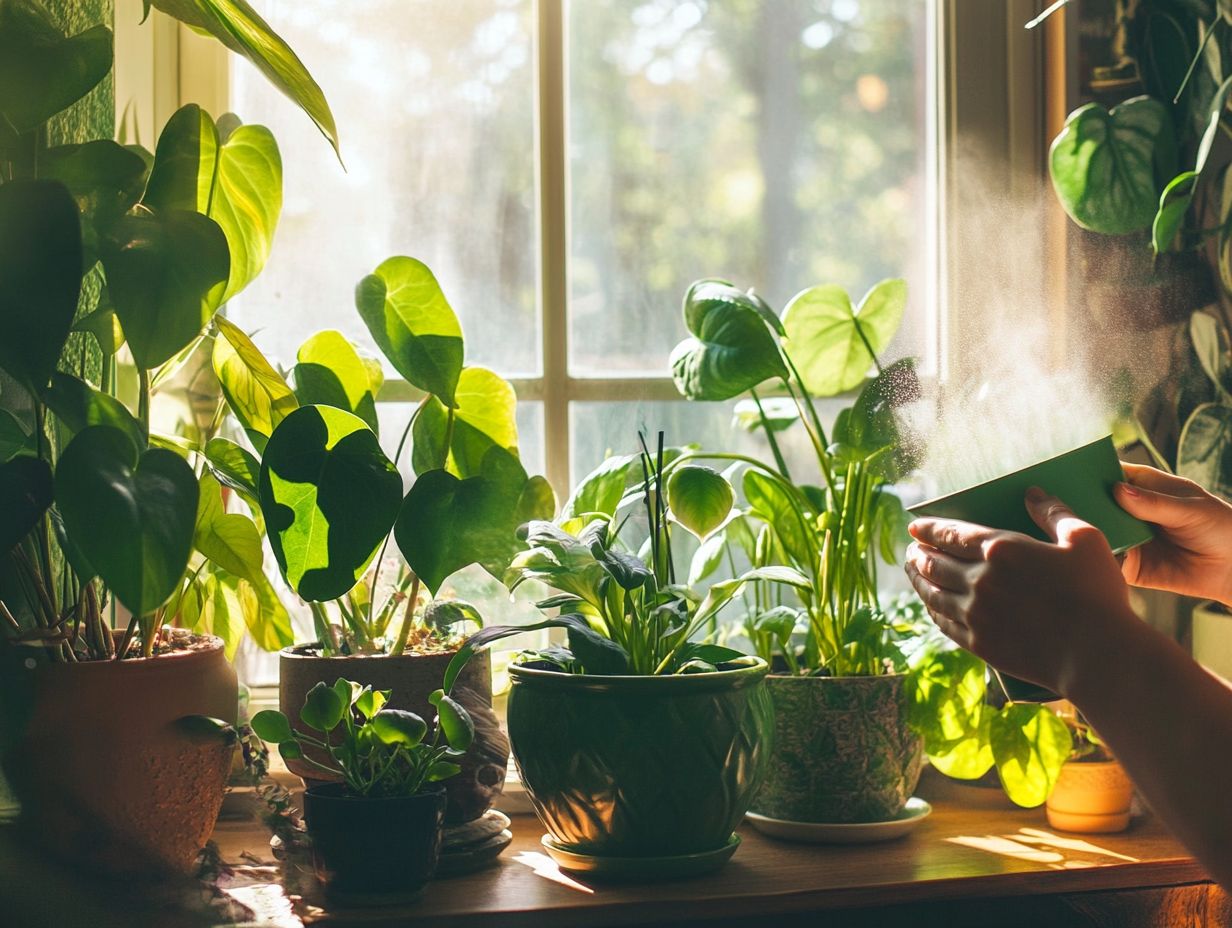
Proper watering and fertilizing are crucial for the health of your Hoya kerrii. These practices ensure that your Sweetheart Plant thrives with its signature thick leaves. Let the soil dry out between waterings; overwatering can make this beauty susceptible to root rot.
A balanced fertilization schedule incorporating a mix of nutrients during the growing season promotes robust growth and those vibrant heart-shaped leaves you adore.
To check moisture levels, use the finger test: insert your finger into the soil up to the second knuckle. If the top inch feels dry, it s time to give your plant a drink.
Using a well-draining soil mix enriched with perlite helps prevent excess moisture retention. For fertilizing, choose a water-soluble fertilizer diluted to half-strength. Apply it every four to six weeks during the active growing season. For specific guidelines, refer to understanding the care of indoor hibiscus. This approach provides essential nutrients without overwhelming your plant.
Be cautious with fertilization; too much can harm the roots. Stick to the recommended application rates on the product label.
Pruning and Repotting
Pruning and repotting are exciting steps in caring for your Hoya kerrii! They significantly influence its growth and overall aesthetic appeal. Regularly pruning your Sweetheart Plant helps maintain its shape while encouraging bushier growth. Repotting every couple of years refreshes the root system and provides ample space for expansion. Together, these practices create a thriving environment free from overcrowding.
To effectively prune, aim for the growing season ideally spring or early summer. Use clean, sharp tools for precise cuts. This stimulates new growth and safeguards your plant against potential diseases.
When you notice roots poking through the drainage holes or stunted growth despite consistent watering, it’s time to repot. Gently loosen the root ball and opt for a soil mixture that retains moisture while allowing for proper drainage, like a blend of peat and perlite. Following indoor plant care for beautiful displays fosters optimal health, ensuring your plant remains vibrant and flourishing.
Common Issues and Solutions
When tending to your Hoya kerrii, it’s vital to recognize potential challenges and apply effective solutions to promote its health.
Common pests like spider mites and mealybugs can threaten the Sweetheart Plant, resulting in stunted growth and diminished vitality. Knowing how to identify these pests and prevent diseases is essential for ensuring your indoor sweetheart thrives beautifully.
Pest Control
Effective pest control is essential for the health of your Hoya kerrii. Pests like spider mites and mealybugs can escalate into significant problems. Make it a habit to inspect your plant regularly for signs of infestation, such as webbing or sticky residue, to catch any issues early!
Be aware of aphids and scale insects, which can lead to wilting leaves and stunted growth. Recognizing symptoms early is crucial; for example, aphids cause curling leaves, while scale insects create unsightly bumps on stems.
To effectively manage these pests, consider both chemical options, such as pesticides that work from the inside of the plant, and natural remedies like neem oil and diatomaceous earth. Remember, maintaining proper plant care adequate watering and ensuring good airflow serves as your first line of defense against infestations. Preventive measures are just as important as treatment strategies.
Disease Prevention and Treatment
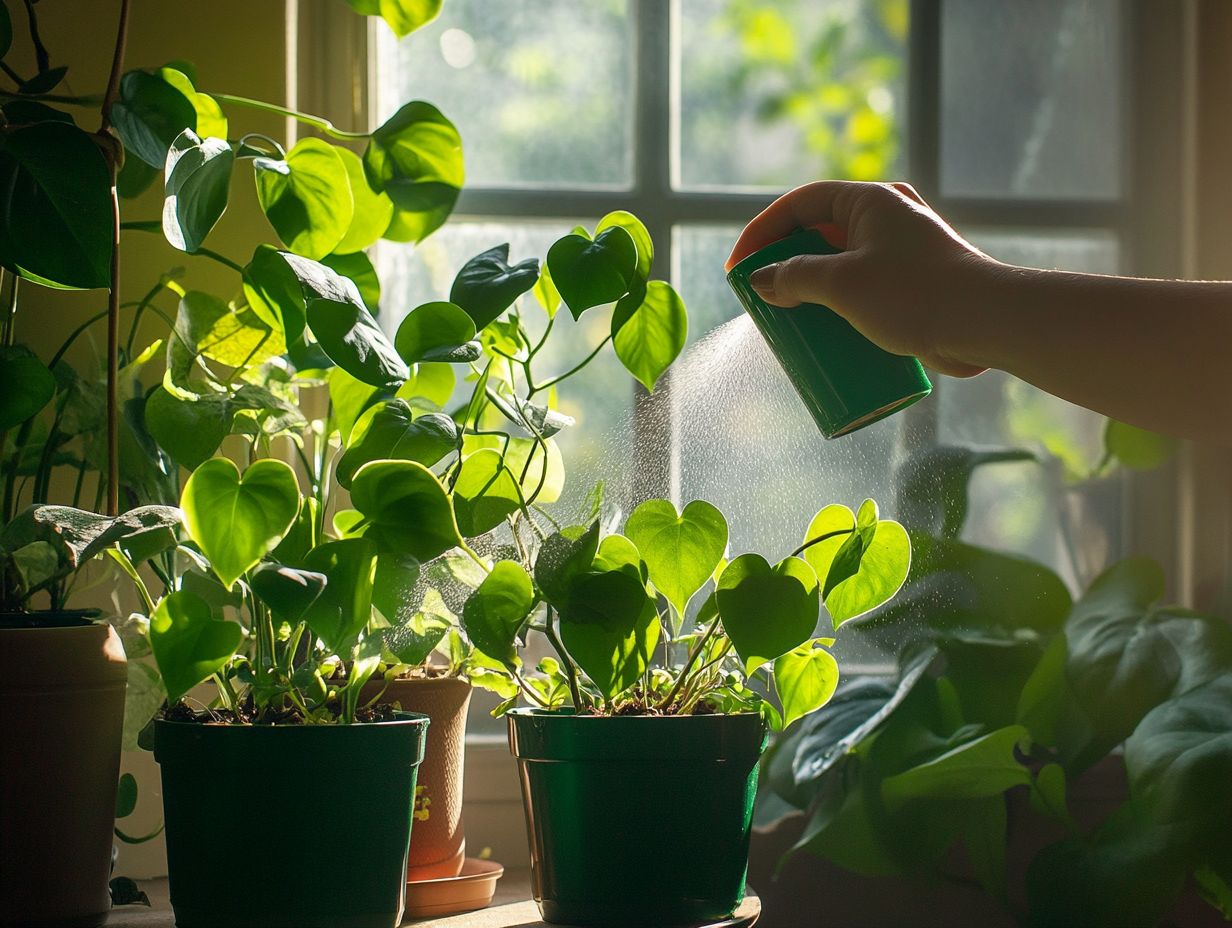
To ensure the longevity and health of your Hoya kerrii, it s essential to focus on effective disease prevention and treatment strategies.
Fungal infections often stem from overwatering or inadequate drainage. These can lead to root rot, a serious issue that requires immediate action.
If you notice dark spots on the leaves or the leaves feel mushy, it s a clear signal that your plant is in distress.
Pests, particularly mealybugs, can also present a significant threat. They leave behind sticky residue and cause leaves to drop.
Regularly inspecting your plant and maintaining a clean environment are key practices to prevent these pesky problems.
Using well-draining soil can make a big difference. Ensure that your pots have drainage holes, which are small openings at the bottom of pots that allow excess water to escape.
With the right light exposure and feeding, your Sweetheart Plant will thrive and bring joy to your space!
Decorating with Indoor Sweetheart Plants
Decorating with indoor Sweetheart Plants, or Hoya kerrii, presents a wonderful opportunity to elevate the aesthetic of your living space while introducing lush greenery.
These delightful houseplants serve as striking focal points thanks to their distinctive heart-shaped leaves. They make a versatile choice for a range of interior design styles.
Combining them with other plants can create a beautiful indoor garden, enhancing the warmth and inviting nature of your home.
Creative Display Ideas
Creative display ideas for Hoya kerrii can transform your space. Show off its beautiful heart-shaped leaves!
Whether you choose decorative pots, hanging planters, or terrariums, the possibilities for integrating this charming plant into your home decor are endless.
By experimenting with different heights and arrangements, you can add captivating visual interest to your indoor garden.
Selecting the perfect pot is essential, as it not only nurtures growth but also contributes significantly to the artistic effect.
Consider opting for ceramic or textured pots to infuse a rustic charm, or go for sleek, modern containers that can create a striking contrast in a contemporary setting.
Grouping several Hoya kerrii in various sizes can form an eye-catching focal point. Incorporating natural elements like driftwood or stones will further enhance your display.
This creates a harmonious blend with your decor and instills a sense of tranquility throughout the space.
Complementary Plant Pairings
When you decorate with Hoya kerrii, selecting the right plant companions can truly elevate the visual allure of your indoor garden.
Pairing this charming sweetheart plant with other indoor favorites like succulents, ferns, or trailing species can create a lush, harmonious atmosphere.
Thoughtful combinations not only enhance aesthetics but also foster a well-balanced environment in your home.
Utilizing plants with varying heights and leaf shapes can draw attention to Hoya kerrii’s unique heart-shaped leaves.
For instance, placing it next to a striking Sansevieria can add vertical interest.
Colorful Caladiums introduce vibrant hues that contrast beautifully with the lush green of the Hoya.
Incorporating delicate ferns provides a soft, airy feel that complements the sturdy nature of the Hoya, inviting tranquility into the space.
Mix these plants now to create a stunning display that draws everyone s eye!
Frequently Asked Questions
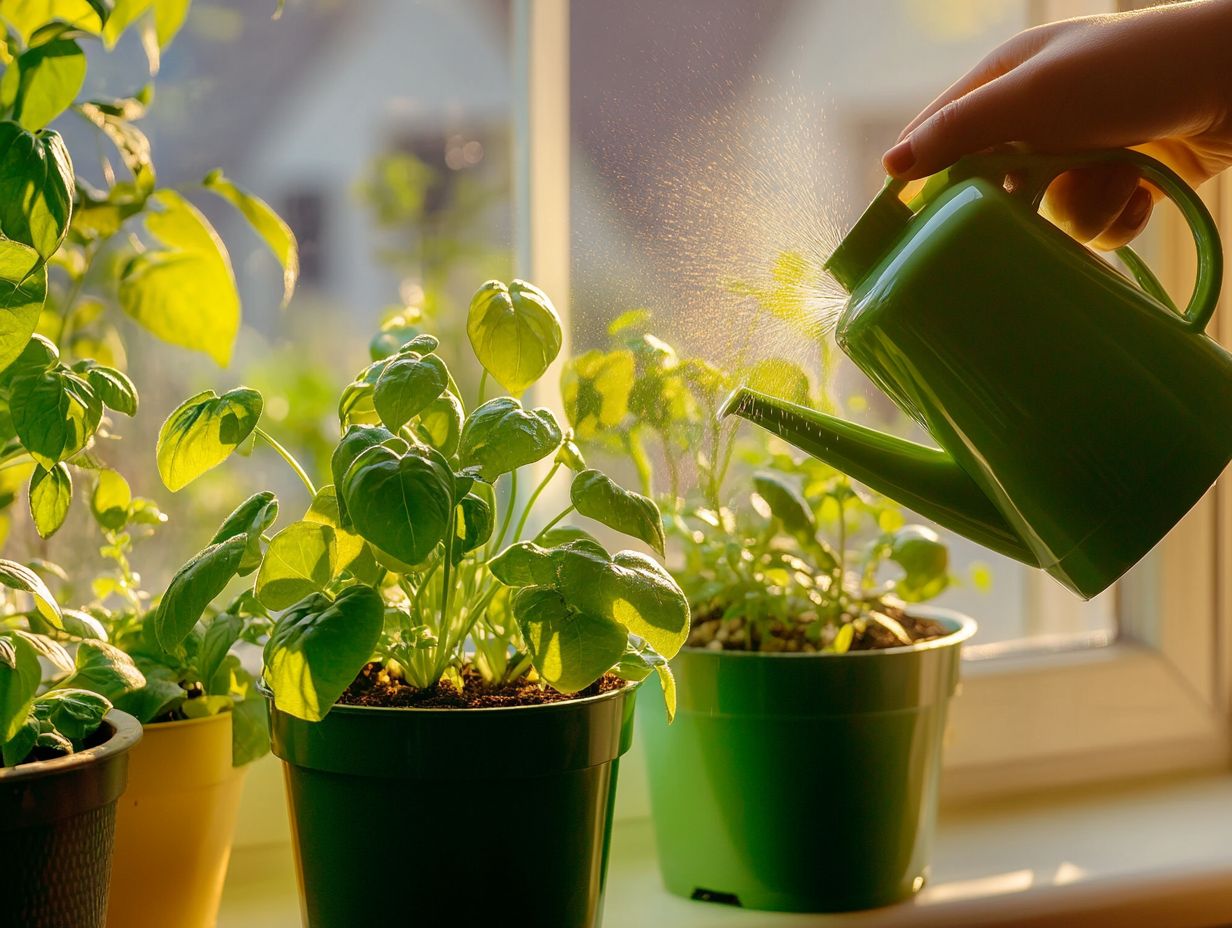
What is the best way to care for indoor sweetheart plants?
To properly care for your indoor sweetheart plant, make sure it is placed in a location with indirect light. Water it once a week.
Also, use well-draining soil and fertilize every two to three months to keep your plants happy and healthy.
How often should I water my indoor Sweetheart Plants?
Water your indoor Sweetheart Plants once a week. Keep the soil evenly moist but avoid overwatering to prevent root rot.
Can I use tap water for my indoor Sweetheart Plants?
Using filtered or distilled water is best for your plants. Tap water can contain harmful chemicals like chlorine.
Do indoor Sweetheart Plants need fertilizer?
Yes! Fertilize your indoor Sweetheart Plants every two to three months. Use a balanced liquid fertilizer, but only at half the recommended strength.
Do I need to prune my indoor Sweetheart Plants?
Pruning isn’t necessary, but you can remove dead or damaged leaves to encourage new growth. It also helps shape your plant nicely!
What should I do if my indoor Sweetheart Plant’s leaves turn yellow?
Yellow leaves often indicate overwatering or too much direct sunlight. Check the soil moisture and adjust your watering schedule. If necessary, move your plant to a spot with indirect light.

